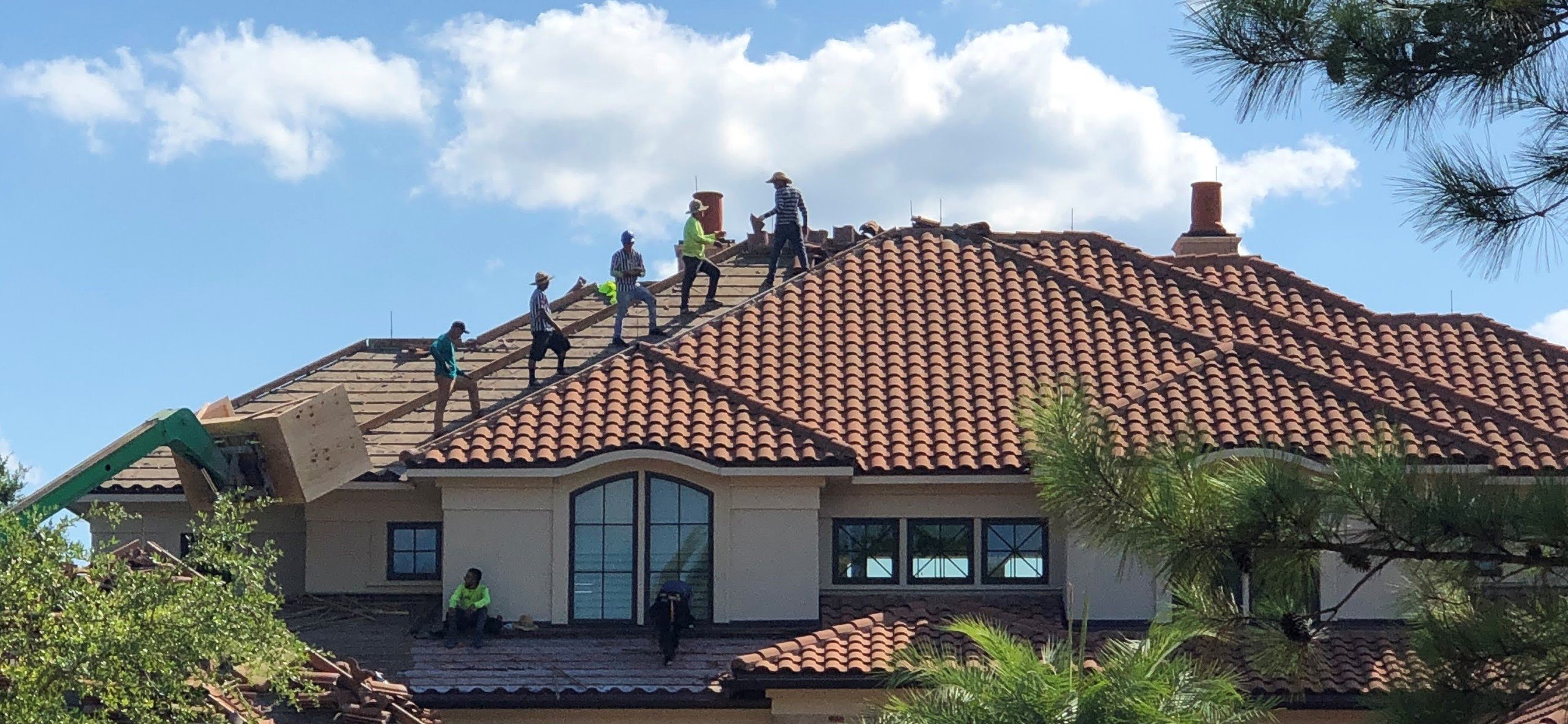Individual Testimonies on the most effective Gainesville FL Roofing Companies Readily Available
Individual Testimonies on the most effective Gainesville FL Roofing Companies Readily Available
Blog Article
Ideal Practices for Ensuring Correct Roof Covering Ventilation
A well balanced consumption and exhaust air vent ratio, frequently 1:300, plays a crucial duty, with intake vents preferably put at the reduced side of the roof covering for cool air entry and exhaust vents at the peak for warm air leave. Keeping insulation away from vents is vital to prevent air movement constraint.
Understand Ventilation Fundamentals
Correctly comprehending air flow essentials is vital for making certain the durability and effectiveness of roof. Effective air flow minimizes moisture build-up and temperature level extremes in the attic room, both of which can bring about significant structural damages over time. A well-ventilated roof aids in protecting against typical problems such as mold and mildew development, timber rot, and ice dams, which can jeopardize the honesty of the roofing materials and the underlying frameworks.
The key goal of air flow is to help with the motion of air, permitting a constant exchange in between the outdoor and interior environments. This equilibrium is achieved via a mix of consumption and exhaust vents that work with each other to keep optimal airflow. Consumption vents, commonly located along the soffits or eaves, enable fresh air to enter the attic room room, while exhaust vents, frequently situated at or near the roof covering ridge, enable warm, humid air to leave.
Secret aspects influencing the performance of roofing air flow consist of appropriate placement, sufficient sizing, and ensuring that both consumption and exhaust vents are unblocked. Routine examination and upkeep are critical to recognize potential clogs, damage, or inadequacies in the air flow system, therefore protecting the roofing's performance and durability.
Kinds Of Roof Covering Vents
Roofing system vents play an essential duty in keeping efficient attic ventilation and, by extension, the general wellness of the roof covering system. Numerous kinds of roofing system vents are readily available, each with one-of-a-kind advantages tailored to certain roofing needs. Ridge vents, for instance, are set up along the roofing system's top, permitting warm, damp air to get away from the attic room. They provide continuous air flow and blend flawlessly with the roofline, making them both reliable and visually pleasing.

Soffit vents are mounted under the eaves and work in tandem with roof covering vents to make certain a balanced consumption and exhaust system. By permitting cooler air to go into from below, soffit vents facilitate the expulsion of hot air via upper vents. Gable vents, situated on the outside wall surfaces of the attic, deal another effective option, specifically in homes with gable roofs.
Examine Your Current Air Flow

Next, think about the age and condition of your roof covering materials and ventilation elements. Older systems might not conform with current building regulations or might have worn away gradually, lowering their performance. Conduct a thorough examination to determine any indications of wear and tear, such as corrosion, damages, or voids that might compromise the system's efficiency.
In addition, measure the attic temperature and humidity levels. High temperature levels and humidity can show insufficient ventilation.
Setup Best Practices
Efficient installation of roof ventilation systems is extremely important for making certain optimum performance and long life. Correct setup begins with understanding the particular ventilation requirements of the building and the roof covering it covers. This involves calculating the appropriate proportion of consumption to tire vents, commonly sticking to the 1:300 regulation, which states one square foot of air flow for each 300 square feet of attic flooring room.

Consumption vents should be installed at the roof's lower side, often in the soffits, to allow trendy air to go into. Exhaust vents, on the various other hand, ought to be set up near or at the roofing's top to help with the leave of cozy, moist air.
Seal all vent links diligently to avoid air leaks and prospective water infiltration. Use top quality products and adhere to manufacturer standards to ensure durability and effectiveness. In addition, integrating ridge vents with baffles can significantly improve airflow performance by avoiding wind-driven rainfall and snow from entering the attic room.
Ultimately, exact setup of roofing ventilation systems mitigates potential issues such as mold development, ice dams, and architectural damages, making sure the roof's honesty and the structure's total health.
Regular Upkeep Tips
Consistency in upkeep practices is basic to making sure the lasting effectiveness of roof air flow systems. Regular evaluations are crucial, preferably carried out biannually-- in the spring and loss. Throughout these examinations, guarantee that vents are devoid of particles, nests, and other blockages that could hamper air movement. Check for any indicators of moisture accumulation or mold, as these can indicate inappropriate ventilation or leakages (roofing companies in gainesville florida).
Use a soft brush or a vacuum cleaner to remove dust and check my site particles from consumption and exhaust vents. Be cautious not to harm the vent screens or louvers throughout the process.
Proper insulation is similarly vital. Make sure that attic room insulation does not obstruct the vents, as this can seriously restrict air movement. If any insulation has changed or settled, rearrange browse around this site or change it to preserve an efficient barrier.
Lastly, change any kind of damaged or missing parts quickly. Busted vents, split roof shingles, or deteriorated flashing can all add to poor ventilation and should be dealt with immediately. Regular maintenance ensures that the roof covering ventilation system works optimally, thus extending the lifespan of the roofing system itself.
Final Thought
Making certain proper roof air flow is paramount for maintaining the efficiency and sturdiness of a roofing system. Adherence to the 1:300 consumption and exhaust air vent ratio, combined with the tactical positioning of vents, is crucial.
A balanced consumption and exhaust vent ratio, generally 1:300, plays a crucial duty, with consumption vents ideally positioned at the lower edge of the roofing for trendy air entrance and exhaust vents at the peak for cozy air leave. Intake vents, usually located along the eaves or soffits, allow fresh air to Homepage go into the attic room room, while exhaust vents, commonly located at or near the roofing ridge, enable hot, damp air to escape.
Soffit vents are installed under the eaves and job in tandem with roof covering vents to ensure a balanced consumption and exhaust system. By permitting cooler air to go into from below, soffit vents help with the expulsion of hot air with top vents. Adherence to the 1:300 consumption and exhaust vent ratio, coupled with the tactical positioning of vents, is crucial.
Report this page